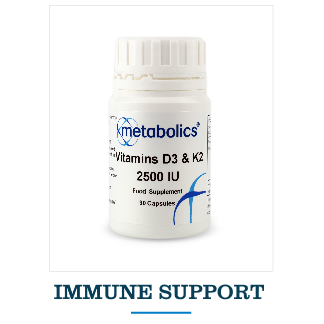OptimEyesformula has been designed to provide nutrients that may provide protection against the development or advancement of the common conditions that affect the eyes. In order to better understand the different conditions of the eye, and how certain nutrients may help, I will briefly review the anatomy of the eye.
Light passes through the cornea, at the front of the eye, through the pupil, (the space at the centre of the coloured iris), through the lens to hit the tissue at the back of the eye, the retina and then a message is sent through the optic nerve to the brain to tell the brain what it is looking at. The lens is suspended and held in position by zonules, which are small fibres that pull on the ciliary muscles. When we naturally focus (or accommodate) the ciliary muscles contract and pull on the zonules which then pull on the edges of the lens and change its shape.
- At birth the lenses are clear and flexible and the ciliary muscles strong and can easily change the shape of the lens.
- After 40 there is a loss of elasticity of the lens, weakened ciliary muscles,and changes that occur in the zonules causing them to become looser,with a resultant decrease in the ability to focus on near objects.(Presbyopia)
- After 50 there is a greater risk of developing cataracts, glaucoma and macular degeneration. Cataracts occur when there is a clouding of the lens as normally ordered proteins become clumped ,making the lens opaque, so that no light can pass through. Glaucoma is associated with pressure building up in the eyes and resultant damage to the optic nerves. This causes peripheral vision loss and can lead to blindness. Macular degeneration is a condition resulting from deterioration of the macular (a centrally located area at the back of the retina), due to hereditary and environmental factors and can be exaggerated by smoking, obesity or ultraviolet light exposure
So what happens when we age?
It has been found that the lens grows throughout life, becoming heavier and larger with age, losing its elasticity and increasing its viscosity.
The zonular fibres that attach the lens to the ciliary muscles are composed of bundles of microfibrils,which become shorter and disorganised during aging.It appears that a degree of cross linking occurs which may decrease their elastic properties,and in combination with the weakening ciliary muscles and lens with altered viscosity leads to poor accomodation and Presbyopia.The other major contributor to aging in the eye is Oxidative stress.Not only is the eye very metabolically active consuming oxygen and producing free radicals but it is constantly exposed to light and oxidants such as air pollutants, tobacco smokeinfrared and Ultra violet rays from the sun.
Oxidative stress is combatted by antioxidants scavenging free radicals. There is a growing body of evidence that indicates that the ability of the human lens to withstand oxidative attack decreases with age because levels of glutathione decrease.It is also well known that lens nuclear cataracts involve protein oxidation and a loss of glutathione at the centre of the lens .Recent studies indicate that high intake of antioxidants in the diet or as supplements confers a considerable protective effect.Accumulation of oxidatively damaged proteins is related to the formation of cataracts.
OptimEyes has been formulatedto help protect the eyes against oxidative damage.I will explain the relevance of each ingredient below.
Beta Carotene, one of a group of red,orange and yellow pigments and is a provitamin, a carotenoid which is converted by the body into retinol in the liver. This in turn is transported to the retina via the circulation and accumulates in the retinal pigment epithelial cells where it binds with opsin, a protein in the retina to create the light sensitive visual pigment rhodopsin (also known as “visual purple”. Rhodopsin is situated in the parts of the eye responsible for low light and peripheral visionVitamin A also protects the cornea of the eye. Metabolics chooses beta carotene as its source of Vitamin A as there are no toxicity issues with this compared to preformed Vitamin A. A study published in June this year showed Vitamin A supplementation improved retinal function in infants at risk of retinopathy of prematurity Vitamin A (when in combination with other antioxidants appears to decrease the risk of AMD (Macular degeneration).In the AREDS (Age Related Eye Disease Study, people at high risk of AMD took a multiple vitamin that included beta carotene and had a 25% reduced risk of advanced AMD. Another recent study at Harvard Medical schoolshowed that a combination of Vitamin A and lutein may prolong the vision in Retinitis Pigmentosa sufferers.
Deficiency of Vitamin A results in corneal ulcers, dry eye and damage to the retina which can contribute to blindness.
The next 3 components are the only carotenoids to get into the eye, namely lutein, zeaxanthin and astaxanthin. This study indicatedstabilisation in Macular degeneration when using these 3 carotenoids.
Lutein-This is found in high concentration is in the macula of the eye which is a small area of the retina responsible for central vision. Here it is called macular pigment and it is found in front of the photoreceptor cells. It is 500-1000x more powerful in the eye than elsewhere in the body. It serves two roles, one to absorb and block excess photon energy, particularly blue light and the other to quench reactive oxygen species before they damage the lipid membranes of the retina. Supplementation with Lutein has been found to significantly increase the macular pigment.
Zeaxanthin This is the strongest antioxidant carotenoid found in the retina. Once it reaches the eye it goes to the lens and the maculaA high intake of zeaxanthin is associated with a lower incidence of age-related macular degeneration and also reduces the possibility of the formation and progression of cataracts. It is believed there is a preferential uptake of zeaxanthin over lutein as it exists in the macula in the ratio of 2:1. Both lutein and zeaxanthin are believed to be carried into the macula on the good cholesterol (HDL) in the blood to the macula.
Astaxanthin-This is a naturally occurring carotenoid which is not converted to vitamin A in the human body. It is a very powerful antioxidant said by some reseachers to be up to 500 times more powerful than vitamin E. In structure it very closely resembles both lutein and zeaxanthin and has been included in this formulation because of its potential benefits to the eyes. As a powerful antioxidant it will protect against lipid peroxidation within the eye It is also said to maintain appropriate eye pressure levels within the eye, and preventing damage as a result of increased intraocular pressure and has the advantage of easily crossing the blood brain barrier and the blood retinal barrier.
Bilberry -Attention was first drawn to Bilberry in WW2 when Royal Air force pilots reported improvement in night vision before a mission after eating bilberry jam.Bilberry is rich in anthocyanosides and helps to maintain the integrity of blood capillaries within the eye, preventing angiogenesis and reduce inflammation. It is also said to stimulate the production of rhodopsin and thought to help counteract the development of cataracts. The anthocyanadins are water soluble and so are important as antioxidants in the vitreous humor. These too are thought to reduce intraocular pressure and support the connective tissues of the eye. In a 2005 animal study bilberry was found to help prevent AMD ( macular degeneration) and cataracts. Although there is contradicting evidence for bilberries effectiveness with night vision it has been included to help prevent glaucoma, AMD, cataracts and diabetic retinopathy.
Grape Seed Extract-Grape seed extract contains phenols such as proanthocyanadins and resveratrol, It also contains vitamin E, flavonoids and the catechin polyphenols. The antioxidant power of proanthocyanidins is 20 times greater than Vitamin E and 50x greater than vitamin C. It is therefore a very good antioxidant and confers a protective function in the eye. Grape seed extract has been shown to protect the epithelial cells of the lens and help prevent cataract.
Vitamin D3. –It is now thought that Vitamin D is capable of regenerating aging eyes. Recent new research at the Institute of Ophthalmology at University College London demonstrated improved vision, reductions in retinal inflammation( with decreased numbers of retinal macrophages that cause inflammatory changes) and in levels of beta amyloid accumulation. Although this research was done on mice further studies on post menopausal women with low Vitamin D3 status and AMD and studies performedbetween 1984 -1998 that showed good vitamin D3 status related to decrease of early AMD have led to its inclusion in this formula.
Vitamin K2- As with any Metabolics formulation where Vitamin D3 has been included, vitamin K2 is also included. Vitamin K has been shown to decrease arterial calcification and flexibility in blood vessels so should be beneficial in maintaining blood vessel integrity in the eye.
DHA- as DHA (Docohexanoic Acid) is an oil, it cannot be included in this supplement as it will not mix with the dried ingredients, so I advise that DHA should always be taken in combination with OptimEyes.
DHA- The DHA content of the eye is 30% dry mass.DHA is concentrated in the pigmented retinal epithelium and has been found to be useful in AMD and Retinitis pigmentosa.There is evidence to suggest that normal DHA levels decrease with normal aging and in one 90day trial, people supplemented with DHA had significantly better visual acuity Omega-3 fatty acids are beneficial for glaucoma patientsas they decrease Intraocular pressure, increase ocular blood flow, and improve optic neuroprotective function.
Retinitis Pigmentosa( RP) is a chronic hereditary eye disease characterized by gradual degeneration of the retina and sight. People with RP experience a gradual decline in their vision because photoreceptor cells (rods and cones) die. The symptoms will depend on which is affected first, although it is usually the rods which are most concentrated in the outer part of the retina and are triggered by dim light so degeneration affects peripheral and night vision. When the centrally located cones become affected, colour perception and central vision is lost. RP is mainly caused by inherited gene mutations Mutant genes give the wrong instructions to the photoreceptor cells, resulting in incorrect protein, or too little or too much protein. Vitamin A, lutein and DHA supplementation has been shown to be an effective treatment for RP. Research has shown that for patients on Vitamin A, who were also supplemented with DHA, RP progression was slowed. Results from another study suggestedthat there was a metabolic defect in the final stages of DHA synthesis from Omega 3 oils.
This makes OptimEyes in combination with Omega 3 oils as in Krill Oil or DHAalone an ideal support, not only for cataracts, glaucoma, macular degeneration and presbyopia but also for Retinitis Pigmentosa.



